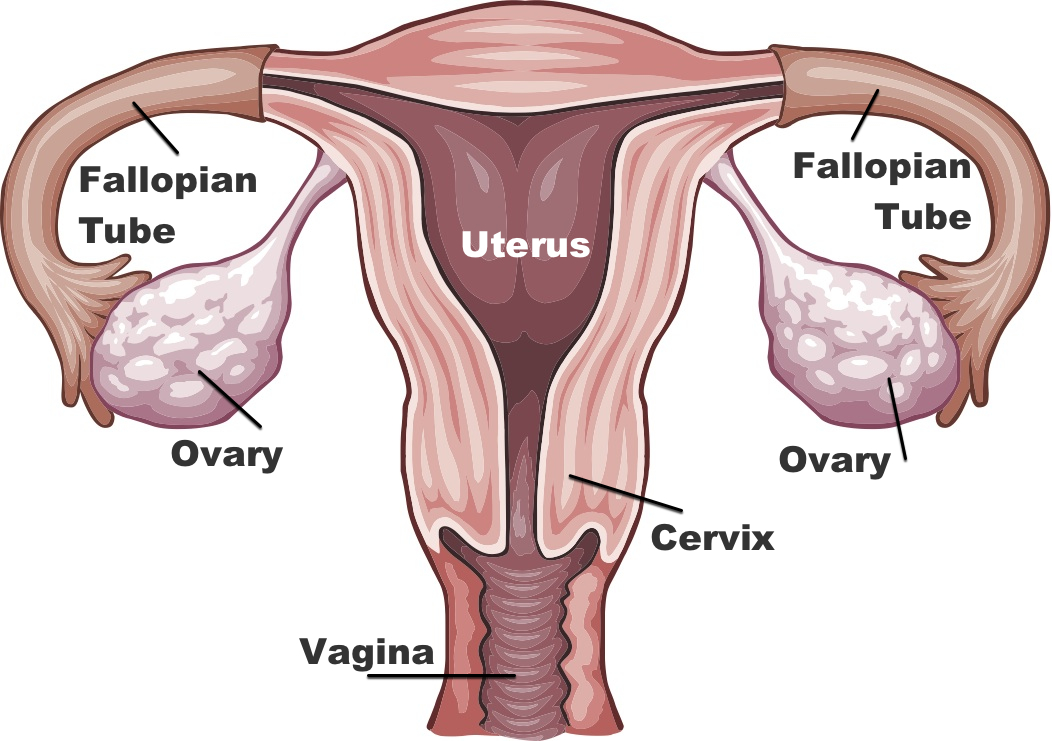What Is Ovulation?

Ovulation is the release of an egg from one of a woman's ovaries. After the egg is released, it travels down the fallopian tube, where fertilization by a sperm cell may occur.
Ovulation typically lasts one day and occurs in the middle of a woman's menstrual cycle, about two weeks before she expects to get her period. But the timing of the process varies for each woman, and it may even vary from month to month.
If a woman is hoping to become pregnant, she will want to keep track of when she may be ovulating. Knowing when a woman is ovulating each month is helpful because she is the most fertile — or able to become pregnant —around the time of ovulation.
A couple will be more likely to conceive if they have sex a day or two before a woman ovulates and the day of ovulation, according to the March of Dimes.
Menstrual cycle and ovulation
At birth, a female fetus has 1 to 2 million immature eggs called oocytes inside her ovaries, which is all the eggs she will ever produce, according to the Cleveland Clinic. By the time a girl enters puberty, about 300,000 of these eggs remain. Approximately 300 to 400 of the remaining eggs will be ovulated during a woman's reproductive lifetime, the Cleveland Clinic says.
A likely sign that a woman is ovulating is that she is having regular, predictable periods that occur every 24 to 32 days, according to the Centers for Disease Control and Prevention (CDC).
With every monthly menstrual cycle, a woman's body prepares for a potential pregnancy. The cycle is regulated by hormones, including the sex hormones estrogen and progesterone, as well as follicle-stimulating hormone and luteinizing hormone. Hormones play a key role in all stages of the menstrual cycle, allowing the ovum (egg) to mature and eventually be released.
When a mature egg leaves a woman's ovary and travels into the fallopian tube, a sperm cell can fertilize the egg. Sperm can live inside a woman's reproductive tract for about 3 to 5 days after sexual intercourse, according to the Mayo Clinic. For pregnancy to take place, a sperm cell must fertilize the egg within 12 to 24 hours of ovulating, according to the Mayo Clinic. The fertilized egg then travels to the uterus, or womb, where it can attach to the lining of uterus and develop into a fetus.
During ovulation, the walls of the uterus also thicken to prepare for a fertilized egg. But if the egg is not fertilized, the uterine lining is shed about two weeks later, causing menstrual flow to begin. But simply having her period does not always indicate that a woman is ovulating.
"The most misunderstood thing about ovulation is the idea that if you are menstruating, it means that you are ovulating; and that is indeed not the case at all," said Dr. Mary Jane Minkin, a clinical professor of obstetrics, gynecology and reproductive sciences at the Yale School of Medicine.
Many women have an ovulatory cycle — the buildup of the lining of the uterus — because they are making estrogen. But when the buildup gets to a certain level, the lining just sloughs off, and a woman can bleed quite heavily, said Minkin. When a woman ovulates, she also makes the hormone progesterone, which results in a more controlled bleed.
Timing / ovulation clues
Many people mistakenly believe that ovulation always happens exactly 14 days after a woman's last period. But the timing of ovulation varies for each woman and depends on the length of her menstrual cycle.
If a woman typically has 28-day menstrual cycles, she usually ovulated between days 13 to 15; If her cycle ranges between 27 and 34 days, ovulation usually occurs between days 13 to 20, according to The American Society for Reproductive Medicine.
"Most women have no idea when they ovulate," said Dr. Christina Ramirez, an obstetrician and gynecologist in Garden City, New York.
Beside charting the timing on a calendar, a woman may have other clues that she could be ovulating. Her body may have one of the following three signs:
1. Change in vaginal secretions.
A few days before a woman ovulates, her cervix, which is the lower part of the uterus, produces a type of mucus that is thin, clear, slippery and stretchy. This change in cervical mucus occurs when ovulation is approaching and her ovaries are getting ready to release an egg. The day after ovulation occurs, cervical mucus undergoes another change and it becomes thicker and cloudy.
2. Change in basal body temperature.
Keeping track of a woman's basal body temperature, which is taken in the morning before she gets out of bed, for two to three menstrual cycles may help predict when she is fertile. Shortly after ovulating, many women show a slight increase (about 1 degree F) in early morning body temperature. A woman is most fertile during the 2 to 3 days before her temperature rises, according to the Mayo Clinic.
3. Rise in luteinizing hormone.
About 24 to 36 hours before a woman ovulates, her levels of luteinizing hormone increase. A rise in luteinizing hormone is a signal for the ovary to release an egg. This hormone increase can be detected by using an ovulation predictor kit, which can test a sample of urine in the days leading up to ovulation. When a rise in luteinizing hormones is detected, the test will show a positive result.
Fertile window
A woman is fertile — able to become pregnant — only during a certain part of her monthly cycle. The "fertile window" spans a 6-day period, the 5 days before ovulation and the day a woman ovulates, according to The American Society for Reproductive Medicine. Studies suggest that intercourse is most likely to result in a pregnancy when it occurs in the three days leading up to and including the day of ovulation.
Home ovulation test
If a woman is getting her period on a monthly basis, but not getting pregnant, it may be because she is not ovulating. An ovulation predictor kit can be helpful to see whether a woman is, in fact, ovulating.
This kit, sold over-the-counter in drug stores, can test a woman's urine to detect if she is experiencing an increase in luteinizing hormone, which usually happens about 24 to 36 hours before ovulation occurs, according to the Mayo Clinic.
A woman may want to begin using the kit about 10 days after the start of her last period, the March of Dimes recommends.
"And if the test shows that ovulation isn't occurring, it's a great time to check in with your gynecologist: because getting women to ovulate is often quite straightforward," said Minkin. When ovulation is irregular or does not occur, doctors may try to induce the process by prescribing medication to stimulate a woman's ovaries to release an egg.
Ovulation problems
There are many reasons why a woman may have ovulation problems. Some women, for example, have blocked fallopian tubes due to pelvic inflammatory disease, endometriosis or surgery for an ectopic pregnancy, according to theU.S. Department of Health and Human Services.
An abnormal level of hormones can cause ovulation to be irregular or not occur at all, according to The American College of Obstetricians and Gynecologists. For example, polycystic ovary syndrome (PCOS), is a condition in which levels of certain hormones are abnormal and a woman does not get her period or it is irregular. Thyroid problems can also make the ovaries less likely to release an egg.
A woman who is underweight with a body mass index (BMI) of 18.5 or less may have irregular menstrual cycles and it could also cause ovulation to stop, according to the American Society for Reproductive Medicine. At the opposite end of the weight spectrum, obesity may also lead to irregular periods and irregular ovulation.
In addition, the timing of ovulation can be affected by factors, such as stress and excessive exercise. Emotional or physical stress may delay ovulation or prevent a woman from ovulating. Getting too much intense physical activity can also inhibit ovulation, according to the Mayo Clinic.
Problems with ovulation are just one possible cause for infertility, which affects about 12 percent of women in the United States between the ages of 15 and 44, according to the CDC.
Additional reporting by Alina Bradford, Live Science contributor.
Additional resources
Get the world’s most fascinating discoveries delivered straight to your inbox.
Cari Nierenberg has been writing about health and wellness topics for online news outlets and print publications for more than two decades. Her work has been published by Live Science, The Washington Post, WebMD, Scientific American, among others. She has a Bachelor of Science degree in nutrition from Cornell University and a Master of Science degree in Nutrition and Communication from Boston University.
